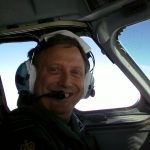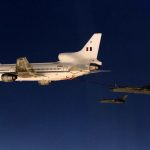Most Significant Factors Affecting GPS Accuracy
Ionospheric Propagation Delay (Atmospheric)
One of the most significant errors in the pseudo-range measurements results from the passage of the satellite signal through the Earth’s ionosphere, which varies depending on the time of day, solar activity and a range of other factors. Ionospheric delays can be predicted and an average correction applied to the GPS position, although there will still be some minor error introduced by this phenomenon.
Satellite Orbital Variations (Ephemeris)
Although the satellite orbits are extremely stable and predictable, some perturbations do exist. These are caused by gravitational effects of the Earth and Moon and the pressure of solar radiation.
Satellite Clock Error
Timing errors due to inaccuracies in both the satellite and receiver clocks, as well as relativity effects, can result in position errors of up to two metres.
Dilution of Precision
Geometric Dilution of Precision (GDOP) is an effect that degrades the accuracy of a position fix, due to the number and relative geometry of satellites in view at the time of calculation. The value given is the factor by which the system range errors are multiplied to give a total system error.
Position Dilution of Precision (PDOP) is a subset of GDOP that effect latitude, longitude and altitude. Many GPS receivers are able to provide an estimate of PDOP.
Multipath
An error in the pseudo-range measurement results from the reflection and refraction of the satellite signal by objects and ground near the receiver. This is known as Multipath error. Ghosting of television pictures is an example of Multipath effect.
As GNSS is a three-dimensional navigation system, the errors do not all lie along a line and therefore should not be added algebraically. Total system range error is calculated by the root-sum-square method, where the total is the square root of the sum of the squares of the individual errors
Other GPS Errors
Receiver
Due to the low signal strength of GNSS transmissions, the receiver’s pseudorandom noise codes are at a lower level than the receiver ambient noise. This results in a fuzzy correlation of the receiver code to the satellite code, and produces some uncertainty in the relationship of one code to another. The position error that results form this effect is about one metre.
Dynamic Masking
Part of an aircraft can get in the way of a 1satellite signal, for example the outside wing in a turn. If this blanks the signal momentarily, the navigation capability may be degraded or lost requiring several seconds of S&L flight to re-establish navigation information.
Susceptibility to interference
As the satellite signal is so low powered it is vulnerable to interference or jamming. Sources of interference are numerous and it is known that jamming devices are available that can disrupt the signals over a wide area.















